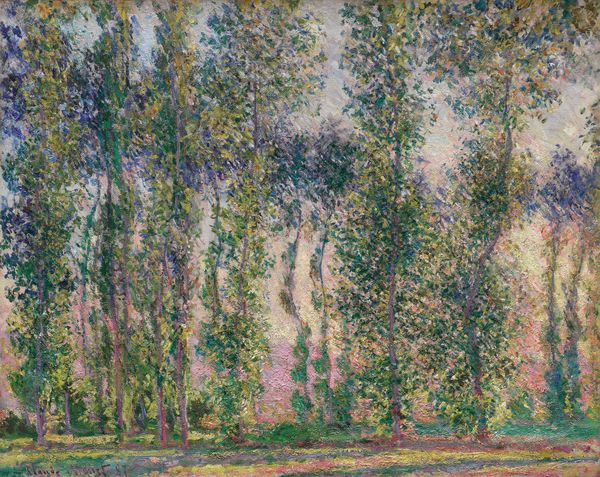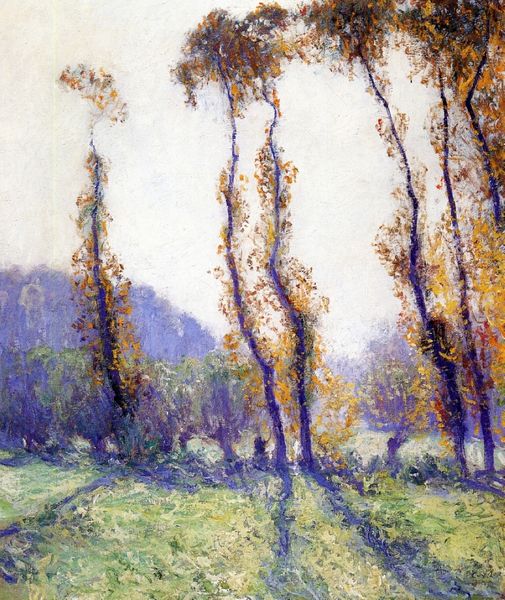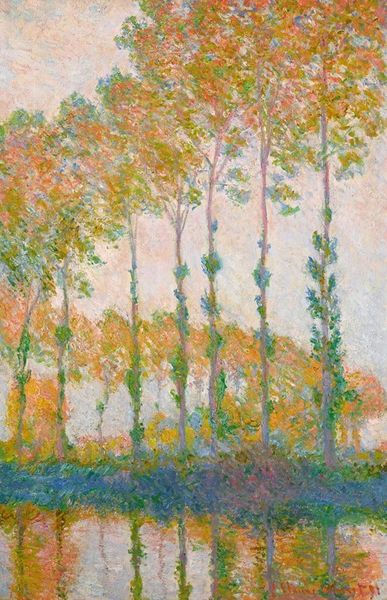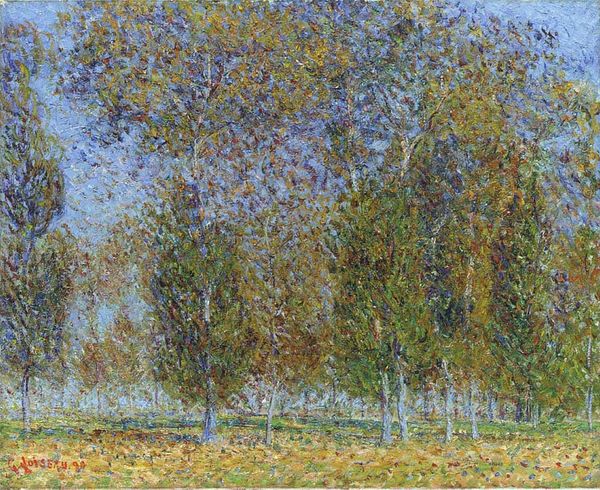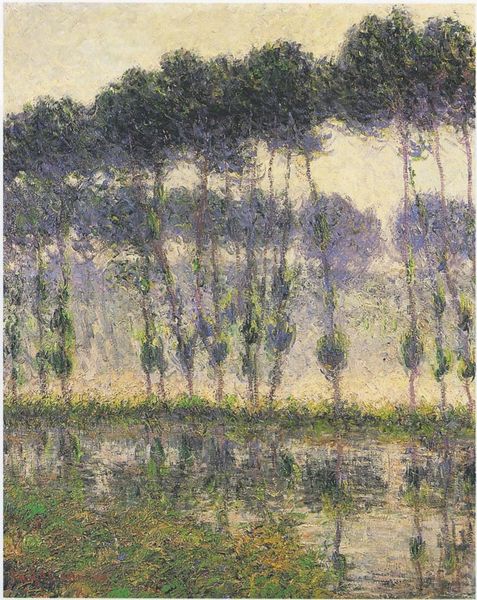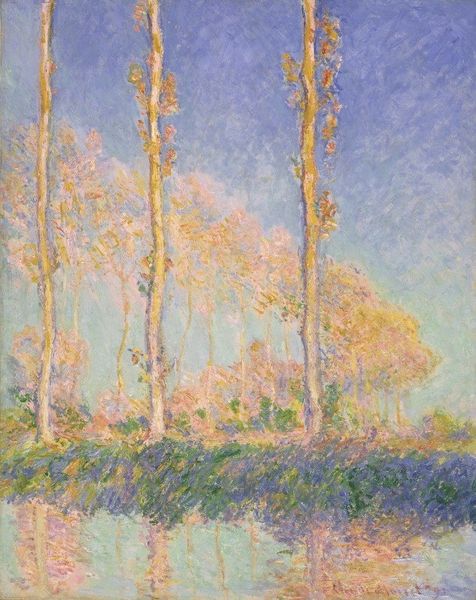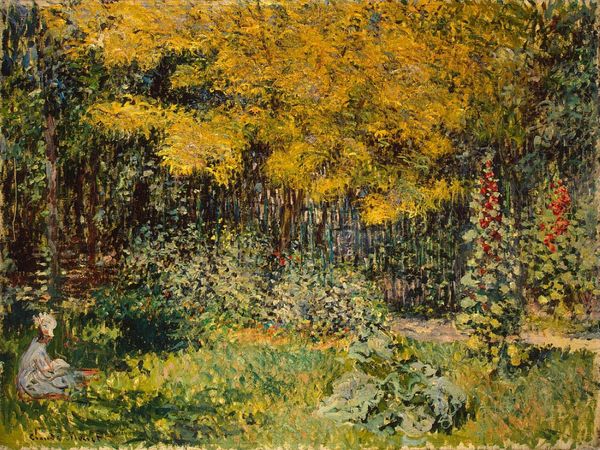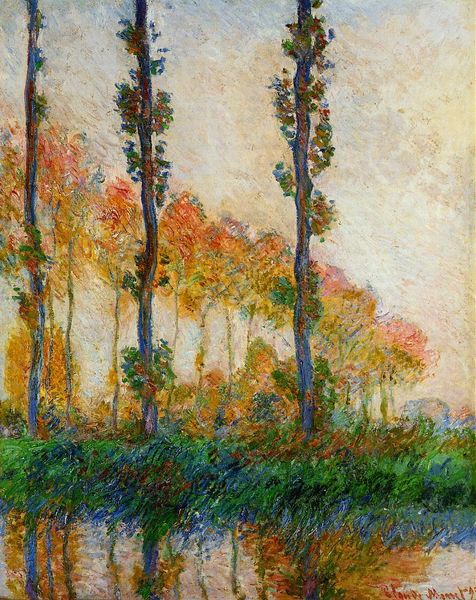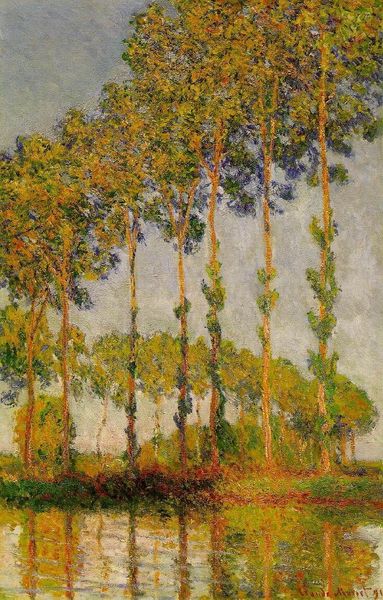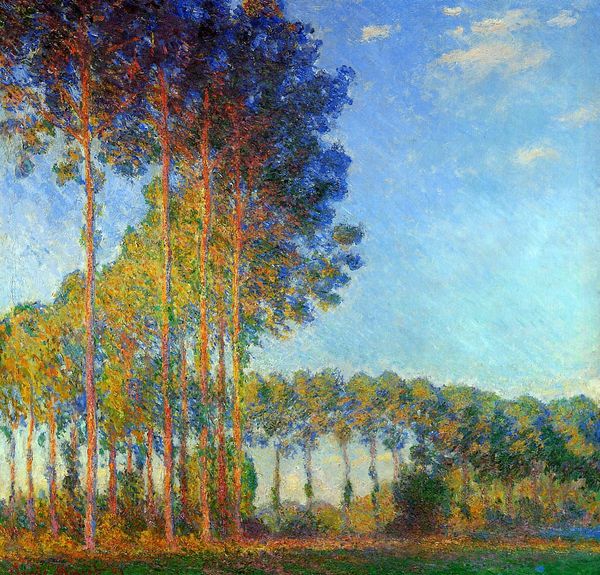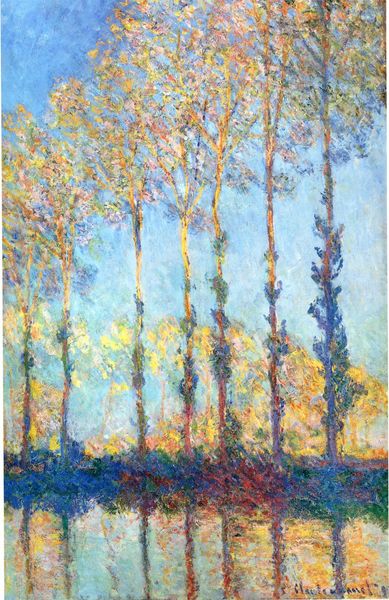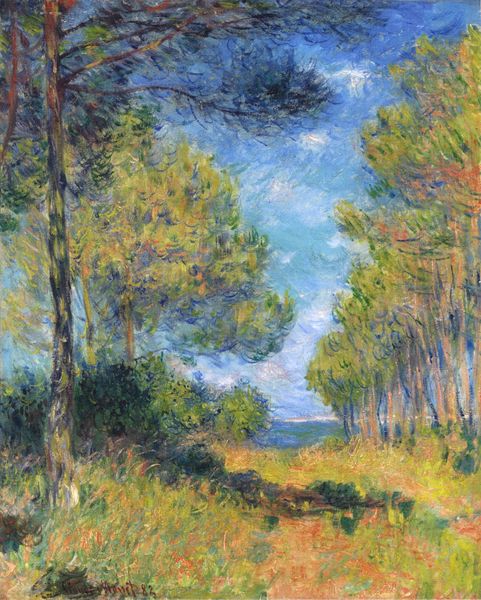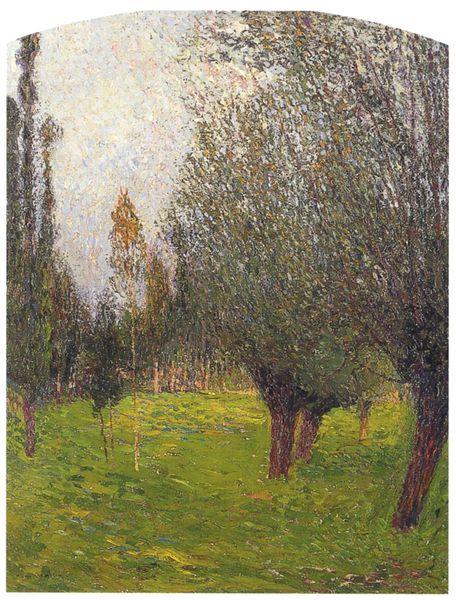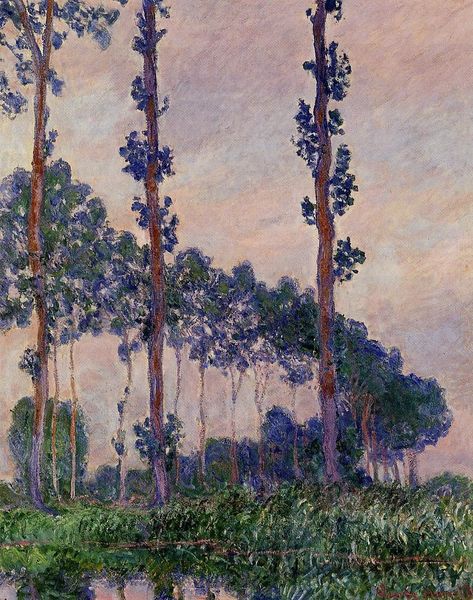
Copyright: Public domain
Editor: So, this is Monet's "Poplars at Giverny" from 1888, done in oil paint. The colors feel so warm, but there's also a sense of looming darkness in the trees themselves. What's your interpretation of this landscape? Curator: Well, it's impossible to view this painting outside of its historical moment. The late 19th century in France saw increased industrialization and urbanization, which fueled a simultaneous longing for the rural and natural. Monet's series of poplar paintings, including this one, tapped into that desire. Notice how he captures not just the trees, but the light and atmosphere surrounding them. Don’t you think that it makes them seem less like botanical studies and more like… emblems of a disappearing world? Editor: That makes sense! I was also wondering, Monet was pretty established at this point, right? Did that status affect how these paintings were received? Curator: Absolutely. By 1888, Monet was a well-recognized figure, which impacted the public's and critics’ reception of his work. He was able to command higher prices for his paintings, and wealthy collectors readily acquired them. Think about it: who was able to *afford* to idealize the disappearing countryside? It speaks to class and access, wouldn't you say? Editor: That's a perspective I hadn’t considered. So, it's not just a pretty picture of trees, but also a reflection of social and economic anxieties of the time? Curator: Precisely. And even how it's displayed – the very act of exhibiting and collecting these paintings in museums or private homes transforms them into commodities, objects of status and taste. How might it look differently viewed in Giverny? Editor: I see. It’s fascinating how a seemingly straightforward landscape can be so layered. Curator: Indeed. And that's the beauty of art history. It’s never just *what* is depicted, but also *how* and *why*, and who gets to decide what it all means.
Comments
No comments
Be the first to comment and join the conversation on the ultimate creative platform.
